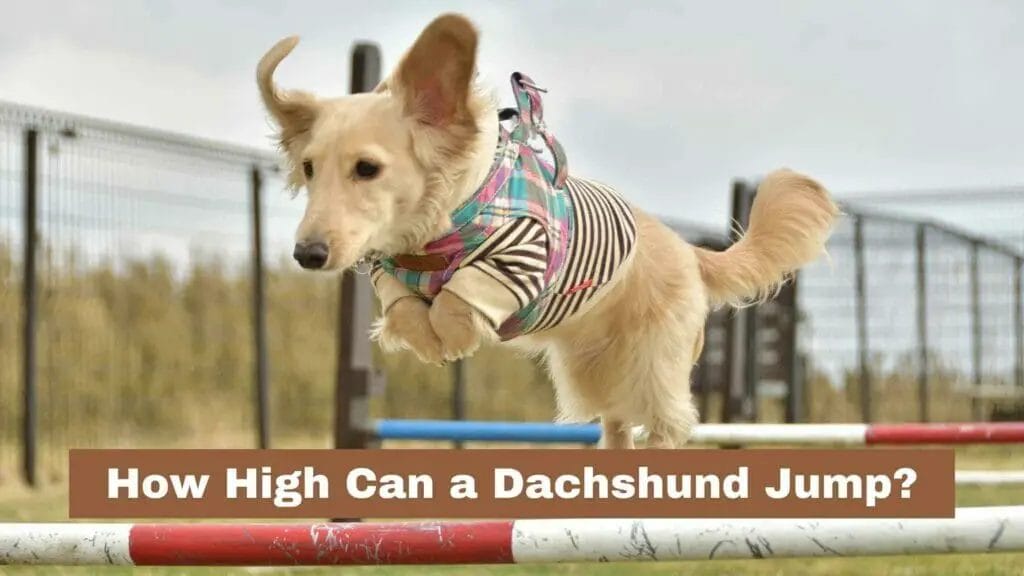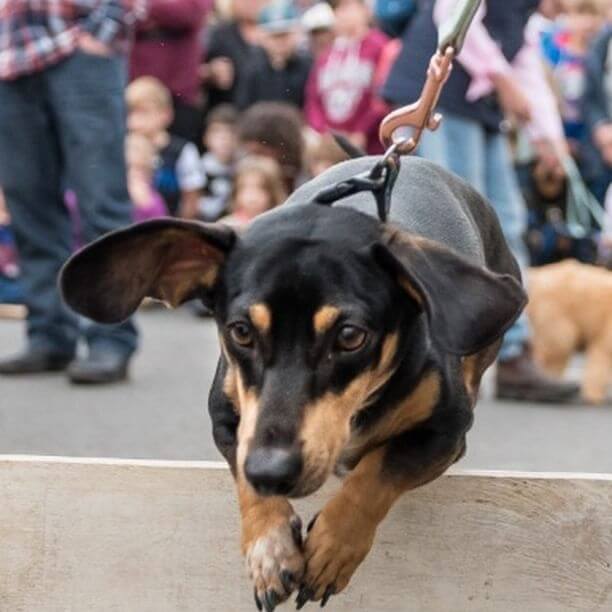
I’m often asked about the extent of Dachshund’s physical abilities, especially when it comes to jumping. Let me share with you what I’ve learned through my years of experience.
Quick Facts:
- Dachshunds can jump as high as 4 feet, but due to their fragile spines, excessive jumping can lead to back injuries, joint issues, and diseases such as intervertebral disc disease (IVDD).
- Physical activities including jumping must be carefully managed, especially in older or overweight dachshunds who may be prone to health issues or may lack the physical ability to jump.
- Despite limitations, dachshunds can still be active and playful, enjoying activities such as walks and playing with toys.
- 25% of dachshunds are affected by IVDD, which can be exacerbated by jumping and cause spine rupture.
- Limiting a dachshund’s jumping and maintaining a healthy weight can help prevent spinal injuries, hip dysplasia, and arthritis.
- Training a dachshund to jump safely can be done by setting up a secure area and starting at a low height using positive reinforcement techniques.
- Preventing jumping-related injuries can be achieved by investing in soft stairs or a ramp, using barriers/gates to create a safe area, and ensuring dachshunds are trained to use these alternatives instead of jumping.
The Surprising Spring in Their Steps
Contrary to what their short limbs suggest, these little dogs can pack quite a punch in their leap. Through careful observation and backed by research, I’ve seen Dachshunds manage to jump up to an impressive 4 feet. Their athleticism is quite remarkable for their size, but it’s not without potential repercussions.

A Balancing Act: Playfulness vs. Protection
While it’s a joy to see these pups in action, every jump could be a risk. Particularly, I am cautious with older or more voluptuous Dachshunds, as their bodies aren’t as forgiving. Nonetheless, a happy Dachshund is an active one. Encouraging safe play, such as gentle walks and interactive toys, can keep their spirits high and their backs safe.
Fun Fact: Originally bred to hunt badgers, these canines' body structure was an advantage in burrows - not so much for high-flying acrobatics.
The Perils of Vertical Endeavors
IVDD strikes fear into the heart of any Dachshund owner, affecting roughly a quarter of the breed. Picture a disc in the spine as a jelly doughnut – one wrong move and the ‘jelly’ bursts out, leading to excruciating pain and, in severe cases, paralysis. It’s a stark reminder that every leap could carry a hefty price.
To mitigate these dangers, I’ve found that prevention is better than cure. Ramps, soft stairs, and cozy beds close to the floor can be game-changers, ensuring that their environment doesn’t invite riskyjumps.
Educating for Elevated Safety
Training a Dachshund to jump must be approached with the precision of a surgeon. The process starts low and slow, in a hazard-free zone, where the focus is on positive reinforcement. Never should they be pushed beyond a modest height of two feet – the risks far outweigh the rewards.
Pro Tip: Crate training can work wonders in managing your Dachshund's environment, preventing unsupervised leaps and bounds.
Guardrails Against Gravity’s Gambles
Securing your home with gates or soft steps can prevent your Dachshund from taking a leap of faith off the couch or bed. And while stairs might seem a less daunting challenge, they too can overtax those delicate spines. Vigilance here can avert unwelcome vet visits.
If your little jumper displays any signs of discomfort, immediate veterinary attention is crucial. IVDD can often be managed, but time is of the essence.
FAQs Tailored by a Trainer
When it comes to couch escapades, stairs strolls, or marathon walks, I lean on the side of caution. Yes, Dachshunds can handle some level of these activities, but they must be closely monitored and moderated. For instance, a 10-mile trek? That’s a tall order for short legs. Short, frequent walks are preferable for their well-being.
In every piece of advice I give, my ultimate goal is to blend a Dachshund’s inherent joy with practical measures that protect their unique physiology. And always, I urge consulting a vet when in doubt.
Through the lens of my dog training career, I hope I’ve painted a realistic picture of what it means to care for a Dachshund’s physical activities. Whether they’re springing into your arms or racing down a path, understanding and respecting their limitations is the key to a healthy, happy life together.
